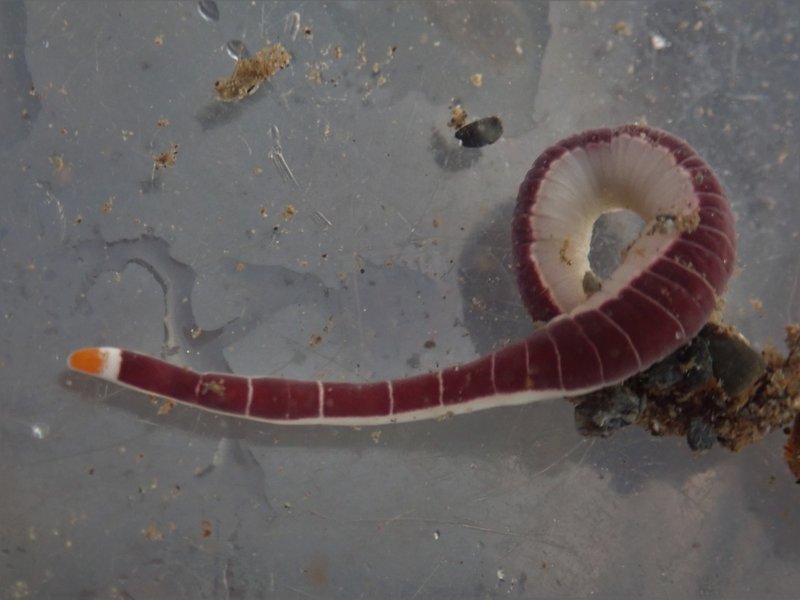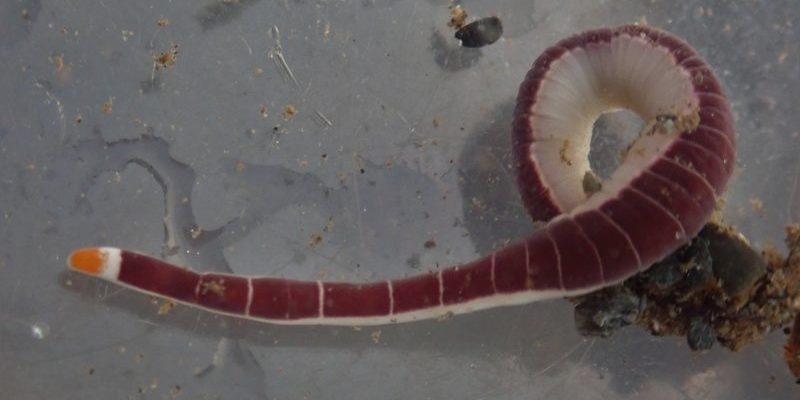
Using time-lapse to record ribbon worm movement isn’t just about snapping a few pictures. It’s like creating a mini-movie that showcases their behavior and interactions in a way that our eyes can’t easily perceive. You can do this effectively with a simple camera setup and a little patience. Think of it like watching a flower bloom or a city come to life over time—it’s all about capturing the transformation in a beautifully condensed format.
So, how do you get started? You might be wondering what equipment you need and how to set everything up. Let me walk you through the process step by step, ensuring you’ll be ready to capture these incredible creatures in action.
What Are Ribbon Worms?
Before diving into the time-lapse aspect, let’s take a moment to understand what ribbon worms actually are. These fascinating creatures belong to the phylum Nemertea. They come in various colors and sizes, often resembling long, flat noodles. Ribbon worms can be found in marine environments, burrowing in the sand or creeping through the ocean floor.
The unique aspect of ribbon worms is their ability to extend and retract their bodies, which is essential for both movement and capturing prey. Imagine a long, stretchy rubber band that you can pull and release. That’s how they move! Watching this motion in real-time is fascinating, but capturing it with time-lapse can reveal so much more.
Keep in mind that ribbon worms can be a bit shy. So, when you’re ready to record them, make sure to approach carefully and set the stage without startling them. The more comfortable they are in their environment, the better your footage will be.
Gathering Your Equipment
To start recording ribbon worm movement using time-lapse, you’ll need a few essential pieces of equipment. Here’s a simple list to get you going:
- Camera: A DSLR or a mirrorless camera is ideal, but even a smartphone can work if it has a time-lapse feature.
- Tripod: Stability is key for clear images over long periods.
- Time-Lapse Feature or App: Make sure your camera has this capability. If not, download an app that allows for time-lapse recording.
- Lighting: Adequate lighting can enhance your video. Natural light works great, but you might want to invest in some soft LED lights.
- Container for the Ribbon Worms: A clear tank or aquarium to observe their movements without disturbance.
With these items in hand, you’re already on your way to becoming a time-lapse wizard. If you’re using a remote camera or smartphone, ensure it’s synced properly. This will make the whole process smoother. Seriously, nothing is worse than realizing you forgot to hit the record button!
Setting Up for Time-Lapse Recording
Now that you have your equipment, it’s time to set it up. Here’s how to get everything in place for capturing those ribbon worm movements:
1. **Position Your Camera**: Deciding where to place your camera is crucial. You want a clear view of the area where the ribbon worm is most active. A top-down view often works best, as it allows you to see their full extension and movement.
2. **Lighting Matters**: If you’re indoors, turn on your lights. If you’re outside, avoid harsh sunlight, which can create shadows and distort colors. Soft, diffused light brings out the natural beauty of the worms.
3. **Container Setup**: Place your ribbon worm in a suitable tank. Make sure the water conditions are optimal for them to be active. Keep the water clean and aerated for the best results.
4. **Adjust Camera Settings**: Set your time-lapse interval. Depending on how slow your ribbon worm is moving, intervals between 10 seconds to one minute can work well. You want enough time to capture meaningful movement without taking too long.
5. **Start Recording**: Hit that record button and let the magic begin! You can check back periodically to see how they’re doing, but avoid disturbing them too much. Remember, patience is key!
Editing Your Time-Lapse Footage
Once you’ve captured hours of ribbon worm movement, it’s time to piece everything together. Here’s how to edit your footage into a captivating time-lapse:
– **Choose Your Software**: There are many free and paid editing software options, like iMovie, Adobe Premiere Pro, or even basic apps on your smartphone. Pick one that you feel comfortable using.
– **Import Your Clips**: Start by importing all your recorded footage. You might have several clips, depending on how long you filmed.
– **Trim Unwanted Parts**: You’ll want to cut out any unnecessary sections, like long pauses when the ribbon worm wasn’t moving. This helps keep your viewer’s interest.
– **Speed Up the Clips**: Most editing software allows you to change the speed of your clips. Adjust the speed to showcase the movement effectively. Often, speeding it up 10-20 times works well.
– **Add Music or Captions**: Adding a little background music can make your video more engaging. If you want to convey specific information, think about adding captions to highlight fascinating facts about ribbon worms.
Once you’re done, export your video. Share it with friends and family, or upload it to social media. Who knows? You might strike a chord with fellow nature enthusiasts!
Common Challenges & Troubleshooting
While recording ribbon worm movements using time-lapse can be rewarding, you might run into a few hiccups along the way. Here are some common challenges and tips on how to overcome them:
– **Lighting Issues**: If your footage comes out too dark or too bright, you might need to adjust your lighting. Experiment with different light sources or angles until you find the right balance.
– **Camera Shakes**: A shaky camera can ruin your footage. Ensure your tripod is stable, and consider using a remote shutter to prevent any movement when you hit the record button.
– **Boredom with Slow Movement**: Ribbon worms can be sluggish at times. If you find the footage isn’t as exciting as you thought, try using a variety of filming angles or intervals for a more dynamic presentation.
– **Battery Life**: If you’re recording for long periods, make sure your camera is fully charged or plugged in. It’s disappointing to miss the best moments because you ran out of battery!
Every challenge can be a learning opportunity. Don’t hesitate to experiment and make adjustments along the way.
Why Time-Lapse Matters in Studying Ribbon Worms
You might be wondering why studying ribbon worm movement is important. Well, there are several fascinating reasons:
– **Behavioral Insights**: Time-lapse footage can reveal behaviors that are hard to see in real-time, like their feeding habits or interactions with other organisms.
– **Educational Value**: By sharing your time-lapse videos, you’re helping others learn about these incredible creatures. It’s a unique way to spark interest in marine biology and conservation efforts.
– **Artistic Expression**: Capturing nature in a creative way allows you to express yourself artistically. It’s a beautiful fusion of science and art.
– **Contribution to Research**: If you’re into scientific pursuits, your videos can potentially assist researchers studying ribbon worms. By documenting their behavior, you can contribute valuable data in an enjoyable format.
In a world where many aspects of life can feel fast-paced and mundane, slowing down to appreciate the beauty of ribbon worms through time-lapse is a delightful and educational endeavor.
In conclusion, using time-lapse to record ribbon worm movement is not only a fun project but also an insightful way to explore the natural world. With the right tools, a bit of patience, and some creativity, you can create stunning visual stories that educate and inspire. So grab your camera, set up your tank, and get ready to capture the fascinating dance of ribbon worms. Happy filming!

